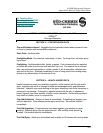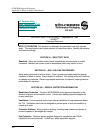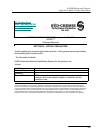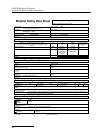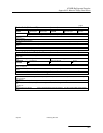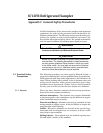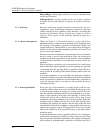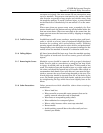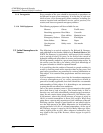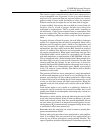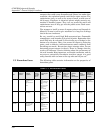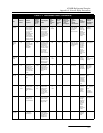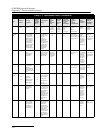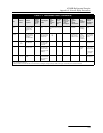
6712FR Refrigerated Sampler
Appendix C General Safety Procedures
C-2
Sharp Edges – Sharp edges of items in or near a manhole may
cause cuts or bruises.
Lifting Injuries – Unless proper tools are used to remove
manhole covers, back injuries or injuries to hands or feet may
result.
C.1.2 Planning Advance planning should include arrangements for test
equipment, tools, ventilating equipment, protective clothing,
traffic warning devices, ladders, safety harness, and adequate
number of personnel. Hasty actions may result in serious
injuries. Time spent in the manhole should be kept to a
minimum.
C.1.3 Adverse Atmospheres [Refer to Table C-1, Hazardous Gases, at the end of this
appendix.] Before workers enter a manhole, tests should be made
for explosive atmosphere, presence of hydrogen sulfide, and
oxygen deficiency. Combustible or toxic vapors may be heavier
than air, so the tests on the atmosphere must be run at least
3
/4 of
the way down the manhole.
Whenever adverse atmosphere is encountered, forced ventilation
must be used to create safe conditions. After the ventilating
equipment has been operated for a few minutes, the atmosphere
in the manhole should be retested before anyone enters the
manhole.
When explosive conditions are encountered, the ventilating
blower should be placed upwind to prevent igniting any gas that
is emerging from the opening. When a gasoline engine blower is
used, it must be located so that exhaust fumes cannot enter the
manhole.
If testing equipment is not available, the manhole should be
assumed to contain an unsafe atmosphere and forced ventilation
must be provided. It should never be assumed that a manhole is
safe just because there is no odor or the manhole has been
entered previously.
C.1.4 Entering Manholes Since the top of the manhole is usually flush with the sur-
rounding surface, there may not be anything for the person who
is entering the manhole to grab on to steady himself. Persons
who are entering manholes should not be permitted to carry any-
thing in their hands as they enter the manhole, to ensure that
their hands will be free to hold on or grab if they slip. A good
method for entering a manhole is to sit on the surface facing the
manhole steps or ladder, with the feet in the hole and the arms
straddling the opening for support. As the body slides forward
and downward, the feet can engage a rung, and the back can rest
against the opposite side of the opening. If there is any doubt
about the soundness of the manhole steps, a portable ladder
should be used.
A person should never enter a manhole unless he is wearing per-
sonal safety equipment, including a safety harness and a hard
hat. Two persons should be stationed at the surface continuously
while anyone is working inside a manhole, to lift him out if he is




